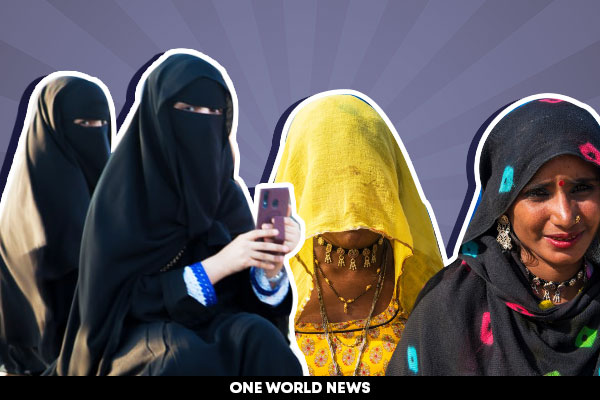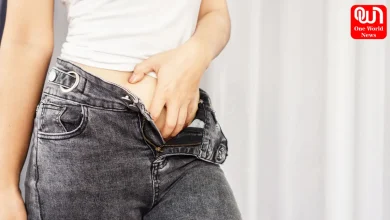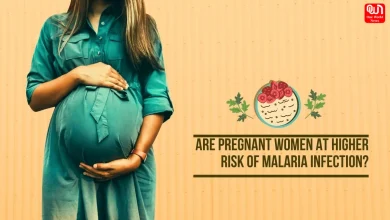
Burqa vs Ghoonghat : Why Does A Choice Become Misogyny
Society has always tried to take control of what a woman should wear since the origin of civilization can be traced. Even in the 21st century, women find no escape from the cage of norms around their clothings. From banning jeans, tights and tops to promoting ‘Ghoonghat Mukt’ (ghoonghat-free) Rajasthan, Indian dresses and hijab, society still believes that it has the authority to decide what looks good on women.
The problem becomes bigger when the global sites that claim to be the “voice” of women start lecturing women on clothings. The biased approach on hijab, burqa, ghoonghat and veil is not only against the idea of feminism, but also the dignity of women.

The prominent sites that call themselves the ‘pro-feminists’ are telling women why their sindoor should not symbolise their marriage and love. The same people are telling women how their ghoonghat is a symbol of patriarchal oppression and should be boycotted. They promote ripped jeans and sympathies with “modern” women when a politician remarks on the clothes, while overlooking the cultural value of ghoonghat for a rural woman at the same time. They call skirts and burqas a choice and empowerment, but tag ghoonghat, sindoor and mangalsutra a patriarchal oppression.
The Modern Burqa VS Regressive Ghoonghat
An unbiased activism is an unrealistic representation of humane advocacy. In a society where the activists are advocating for students’ “rights” to wear a burqa in school premises, the sarees are tagged as imposition and a representation of casteism.
Read More- Does Banning Burqa & Hijab in educational institutes count as disruption of freedom of religion?
Not only a saree, but many other cultural significants representing the Hindu traditions are selectively targeted by the pseudo feminists under the shadow of their activism for women rights. The sindoor and mangalsutra, which are considered vital parts of Hindu marriage, are considered patriarchal and mysogynist symbols.
A ghoonghat is as much a matter of choice as any other outfit. Selectively supporting one and discarding the other one is definitely not an activism, but a part of a selective agenda. If you are calling ghoonghat and saree patriarchal and burqa a choice, you must come up with a concrete element supporting your point. Both ghoonghat and burqa have cultural, religious and social significance, whereas ghoonghat is a compulsory element for a married woman in many Indian regions, Burqa is no different.
Earlier this year, Karnataka hijab row made the headlines after an educational institute didn’t not allow students to sit in the classroom for wearing burqa as it was against the institution’s rules and regulations. It sharply gained attention and people protested against the institute. To challenge the college’s action, a senior advocate Devadatt Kamat, argued that “wearing of the hijab is an essential religious practice of Islam.” Kamat further said that a “menstruating woman cannot show her face and hands to strangers.”
Culturally, hijab, burqa and ghoonghat have a significance, and as long as a woman has no objection boycotting it, no one is entitled to school her on what is oppressive and what is empowering.
Women’s Choice Or Social Responsibility?
Irrespective of faith, clothing should be a choice. Whether it’s a saree, hijab, ghoonghat, sindoor, or any cultural significance, it’s a matter of choice for an individual. Clothing has a cultural and social context, and when we speak of women’s emancipation, the most important crux is the women’s choice in the matter. Take the hijab. In several Islamic countries, taking off the hijab is considered committing an act of rebellion, but so are girls intentionally wearing the hijab in India, America, or England.
Calling out Hijab as a choice and shaming saree at the same time isn’t justified. Most of the activists are corrupt and politically motivated and this reflects in their actions. If forcing young urban girls to wear the “right dress” is unfair, then so is telling a rural woman how her customs are patriarchal and should be boycotted. In either case, it is the women’s choice that is not being considered. No one is obligated to tell any individual what to wear and how to look.
Conclusion
While ripped jeans become a symbol of empowerment and Burqa becomes a choice, ghoonghat, bindi, sindoor and mangalsutra are tagged as patriarchal oppression. What a woman wears should be a representation of her choice, not a part of any propaganda of any activism. An individual has the rights and enough knowledge of what they need to wear








